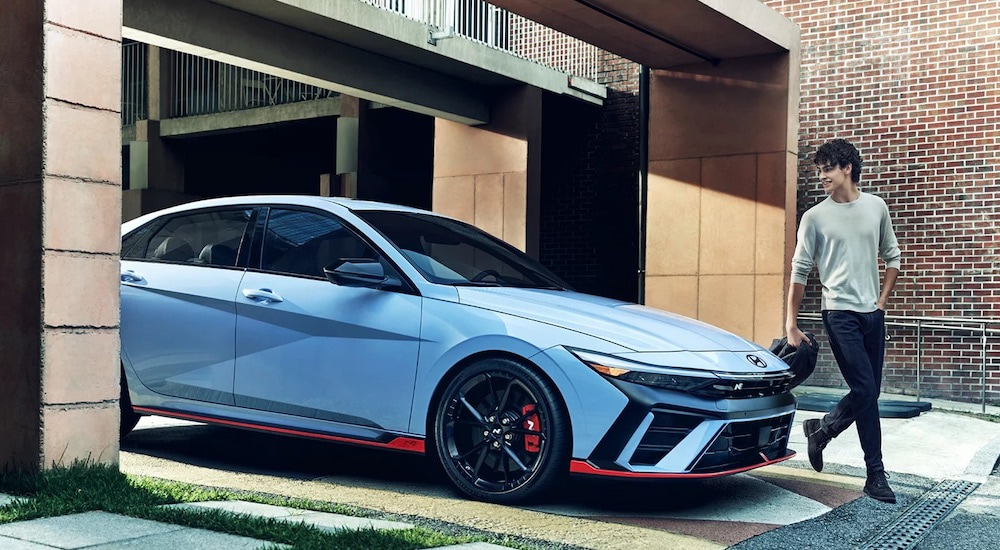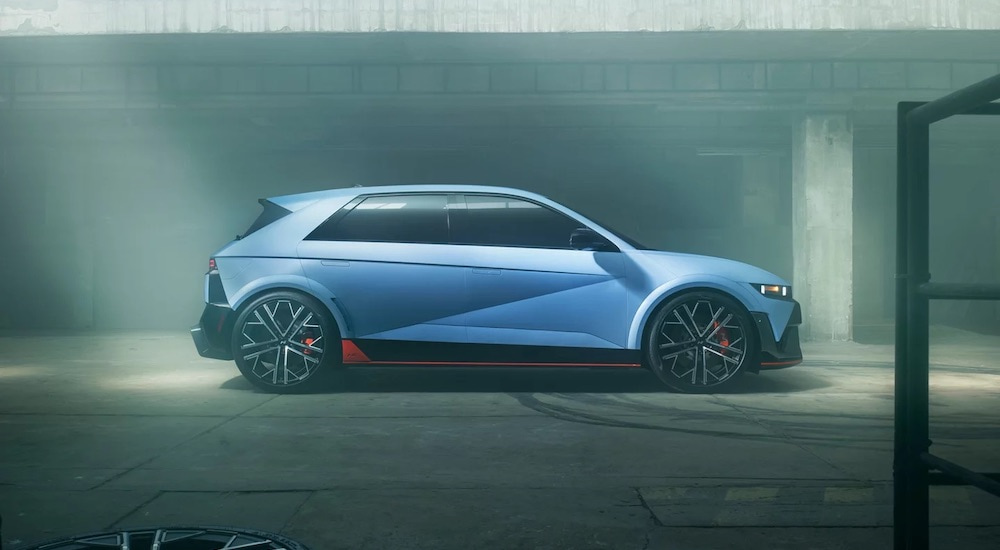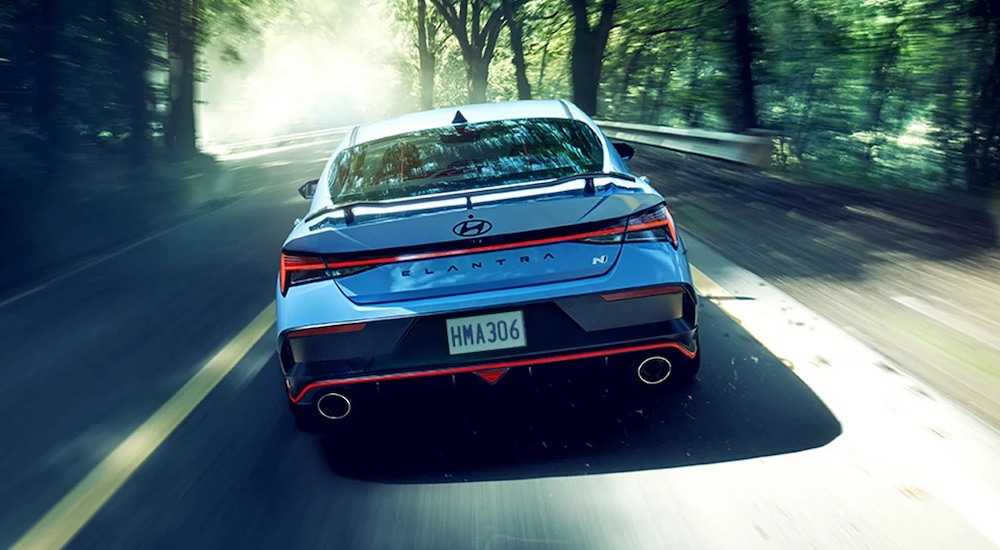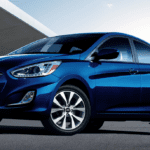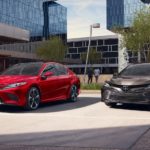Over the decades since Korean automotive companies entered the North American market, their perception has undergone multiple shifts. Initially seen as a “you get what you pay for” cheap alternative to established brands—emphasized by issues with early offerings like the Hyundai Excel—they eventually gained an identity as brands that offered affordable, reliable vehicles, albeit with relatively ordinary performance and features. This certainly paid off in terms of sales. In the last two decades, Hyundai’s sales have nearly doubled, hitting a record-breaking 796,000 vehicles in 2023.
As the brand’s reputation for quality has grown—the 2019 J.D. Power Initial Quality Study had Genesis, Kia, and Hyundai come in first, second, and third—Hyundai made efforts to reposition its steeds as models that can offer the excitement of nameplates like Porsche, BMW, and Alfa-Romeo. For Hyundai, the answer has been the Hyundai N Division. Officially created in 2012, it is helping redefine what is expected from Korean vehicles.
What was the inspiration for Hyundai N, and what does it offer to performance enthusiasts? Today, I wanted to look closer at this fast-growing Hyundai division, what it has accomplished so far to change Korean car perceptions, and what might be next in the pipeline.
The Birth of Hyundai N
Before the late 2000s, Hyundai’s track record in motorsports was sparse, with the most notable moment being in 1992 when Rod Mille drove a Hyundai Scoupe Turbo to a class win at the annual Pikes Peak International Hill Climb. In 2007, though, everything changed. With no factory backing, Schumann Motorsports entered a modified Hyundai Coupé into the world-famous Nürburgring 24 Hours race. Not only did the team win the SP4 class, but they finished 13th overall in a 230-car starting field.
The inspired performance captured the hearts of South Korean residents and the attention of the Hyundai bigwigs. It took some time to put everything in motion, but five years later, Hyundai officially assembled a research team to focus on high-performance cars that could build on Schumann Motorsports’ success. (Side note: the 2007 Nürburgring event also included the first appearance of Team Gazoo; this eventually spawned Toyota Gazoo Racing, a division similar in concept to Hyundai N.)
The rest of 2012 was a whirlwind. In the span of a few months, Hyundai introduced the i20 WRC rally car at the Paris Motor Show, announced a factory team for the World Rally Championship, and opened a Hyundai Motorsport outpost in Germany. Along the way, Rod Millen’s son Ryse smashed the Unlimited Championship record at Pikes Peak while driving a Hyundai Genesis Coupe, setting the stage for what was to come.
From the Racetrack to the Roads
Making Hyundai into a brand that performance enthusiasts would flock to didn’t happen overnight. The WRC team didn’t even enter its first race until 2014, as Hyundai put the pieces in place. But once the momentum started, it didn’t stop. That year, Hyundai unveiled the Racing Midship (RM) series of concept cars that would serve as a high-performance testing lab, and the WRC unit sped to its first victory at Rallye Deutschland.
From there, the development of N Division track vehicles and road vehicles was intertwined, demonstrating Hyundai could show the same commitment as other legendary automakers. It finally released the first production model, the Hyundai i30 N, in 2017. This was followed by the Veloster N in 2018, which was the first option for American drivers. And with its rising fortunes in racing—taking the 2019 WRC manufacturer’s title and winning multiple class honors at the Nürburgring 24 Hours—more of the world was being introduced to Korean high-performance potential.
Suffice it to say the people responded. The inaugural i30 N run for the European market took less than two days to sell out. Shortly after the Veloster N came out, then-Hyundai President and Head of R&D Albert Biermann said they were tracking to sell 10 times as many vehicles as they expected. It was quite a debut that Hyundai has continued to build on.
Taking Pages from Other Industry Leaders
Of course, offering something that’s a radical departure from what your brand is known for only works if you can shake the old perception. When you can’t, you get failed vehicles like the Buick Cascada and the Lincoln Blackwood. In establishing a structure and formula for the Hyundai N Division, Hyundai borrowed three elements that have shown themselves to work elsewhere. This is unsurprising when you consider that 1) Biermann had previously spearheaded the high-performance BMW M division, and 2) Hyundai also poached former BMW engineer and executive Thomas Schemera in 2018.
The first element is releasing high-performance versions of its popular cars. Honda previously demonstrated this could work in the economy segment with the Honda Civic Type R, which it has produced every year since 1997. Hyundai took this to the next level. Hot on the heels of the i30 N and Veloster N, it launched the i20 N in 2020, followed by the Elantra N and the Kona N in 2021—the latter being the brand’s first high-performance SUV. It now even has an N edition of the IONIQ 5 electric crossover, which was named the 2023 Car of the Year by Top Gear and the 2024 World Performance Car by the World Car Awards. The success may well have spurred Toyota Gazoo Racing to do the same by unveiling its GR Supra, GR Yaris, and GR Corolla models.
Second, like BMW M with its M Sport, M Performance, and M lineups, Hyundai has established distinct tiers of N Division vehicles. The main N lineup consists of high-performance models that are still street-legal for serious enthusiasts. The idea is simple: have a car that you can take to the track and do your errands with later. These models also have a lot of adjustability, countering the “one-size-fits-all” daily driver stereotype. The N Line is effectively a sporty trim that keeps the standard powertrain while upgrading elements like the tires and aerodynamics. Then there’s the Concept Line, which tests out technologies on non-production vehicles to see whether they are worthy of future road models.
Finally, the one-letter designation is another way Hyundai has separated itself from traditional Korean vehicle identity, taking after the BMW M and Volkswagen R sub-brands. But why N? According to Hyundai, it represents three things: the Namyang, South Korea, home of its global R&D center; the Nürburgring track, where it conducts all N vehicle practical testing; and the chicane-style turns that are a common closed-circuit design element.
What’s Next for Hyundai N?
Despite having revved things up for the Hyundai nameplate, the future of the N Division is a bit cloudy. Hyundai has been a serious investor in electric cars, thanks in part to increasingly tight emissions standards, including the Euro 7 European Union standards that become law in 2027. The IONIQ 5 N could be a sign of the path the Hyundai N Division must take, leaving the fate of gasoline vehicles like the Elantra N up in the air (the Veloster N already hit the chopping block following the 2022 model year).
Furthermore, Biermann retired from his main role with Hyundai in 2021 to become an Executive Technical Advisor, meaning a less prominent position for one of the N Division’s major allies. Schemera remains the Global Chief Marketing Officer, but everyone will have to wait and see what exactly he’s going to be marketing. Still, Hyundai N has already taken Korean vehicles several notches upwards on the perception ladder, and if it continues making award-winning vehicles, it’ll continue changing the game no matter the model names.
